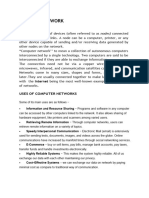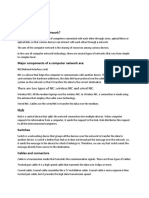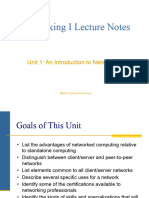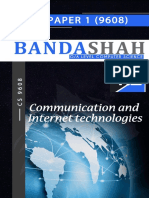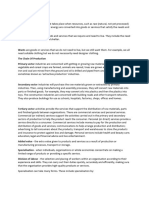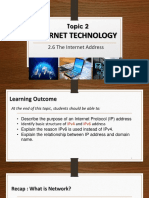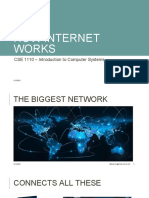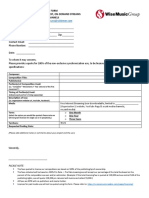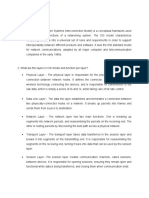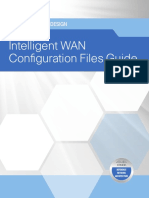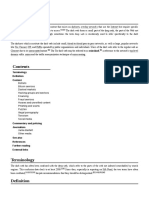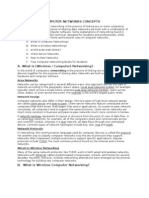0% found this document useful (0 votes)
45 views11 pagesNotes 2.1 - Networks (Part 1)
The document discusses computer networks and networking concepts. It covers local area networks (LANs) which connect devices within a single site using cables, and wide area networks (WANs) which connect devices over large distances using telecommunications links. Two common network models are described: client-server, where servers provide resources to clients; and peer-to-peer where nodes share resources directly with each other in a decentralized manner. BitTorrent is presented as an example of a popular peer-to-peer protocol used for file sharing across the internet. Thin and thick-client configurations are also defined in relation to client-server networks.
Uploaded by
dragongskdbsCopyright
© © All Rights Reserved
We take content rights seriously. If you suspect this is your content, claim it here.
Available Formats
Download as PDF, TXT or read online on Scribd
0% found this document useful (0 votes)
45 views11 pagesNotes 2.1 - Networks (Part 1)
The document discusses computer networks and networking concepts. It covers local area networks (LANs) which connect devices within a single site using cables, and wide area networks (WANs) which connect devices over large distances using telecommunications links. Two common network models are described: client-server, where servers provide resources to clients; and peer-to-peer where nodes share resources directly with each other in a decentralized manner. BitTorrent is presented as an example of a popular peer-to-peer protocol used for file sharing across the internet. Thin and thick-client configurations are also defined in relation to client-server networks.
Uploaded by
dragongskdbsCopyright
© © All Rights Reserved
We take content rights seriously. If you suspect this is your content, claim it here.
Available Formats
Download as PDF, TXT or read online on Scribd
/ 11













